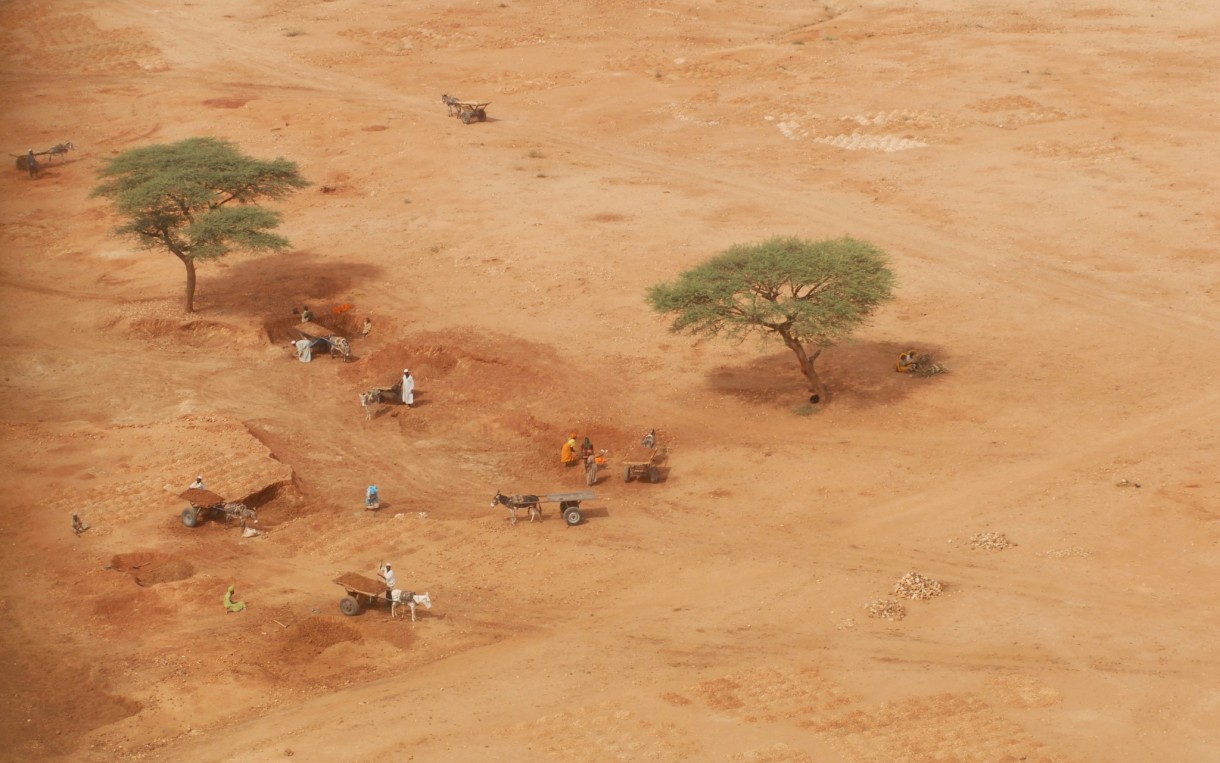Peace in Darfur depends on understanding the role of land issues in the conflict
 Aerial view of the outskirts of Kebkabiye, North Darfur. Photo: Eva-Lotta Jansson/Oxfam
Aerial view of the outskirts of Kebkabiye, North Darfur. Photo: Eva-Lotta Jansson/Oxfam
New Oxfam paper shows new patterns of land use led to competition and exclusion that precipitates violence.
By Abdal Monium K. Osman PhD, Independent Consultant, and Marc J. Cohen PhD, Senior Researcher on Humanitarian Policy at Oxfam America
This month marks the seventh anniversary of the establishment of UNAMID, the joint African Union-United Nations Mission in Darfur. On July 31, 2007, when the UN Security Council passed Resolution 1769 creating the Mission, UN Secretary-General Ban Ki-moon called it “historic and unprecedented,” demonstrating the UN’s “commitment to improve the lives of the people of the region, and close this tragic chapter in Sudan’s history.”
Today, peace seems as elusive as ever in Darfur. Violence escalated last year, leaving 3.5 million Darfuris in need of humanitarian assistance, 2 million of whom live in internally displaced persons camps. Most of the 362,000 Sudanese refugees in neighboring Chad fled the fighting in Darfur.
UNAMID must do a better job of fulfilling its mandate to protect civilians. More fundamentally, however, as we show in our recent Oxfam Briefing Paper, We no longer share the land: Agricultural change, land and violence in Darfur, sustainable peace in Darfur depends on addressing local-level issues in the region, based on a thorough understanding of the causes of the conflict. Most analyses of the violence focus on resource competition between ethnic groups, the supposedly inevitable Cain-and-Abel-style clash between farmers and pastoralists, and the role of climate change in causing and compounding problems.
Analysts have paid much less attention to how changes in the approach to crop production and new patterns of land use have led to competition and exclusion from the land, thereby precipitating the violence. Policy interventions can benefit from a better grasp of these developments and can attempt to reduce polarization, threats to livelihoods, and perceptions of gross unfairness amongst citizens of all groups.
Traditionally, agriculture in Darfur offered mutual benefits to both nomadic herders and farmers who moved among plots of land over time. Different ethnic groups specialized in each activity, and frequently used the same parcels over the course of the seasons. The herders’ animals fertilized the land for the farmers, while the farmers let pastoralists’ flocks graze on stalks and leaves after the harvest. When conflicts arose over such issues as crop destruction by livestock and animal theft, community-based conflict-resolution mechanisms fostered peaceful solutions.
We found that this system has changed dramatically over time in North Darfur. Beginning in the 1960s, farmers in the Kebkabiya area increasingly settled on the land permanently, farmed year-round, and acquired their own livestock. This boosted food production and helped Darfuris cope with periodic droughts. But there were severe unintended consequences.
Changing farming practices have meant exclusive control of land, with fewer opportunities for pastoralists’ herds to graze on crop residues or access common land. Women are less able to grow vegetables, as men now cultivate irrigated plots in the plains.
Exclusive land ownership didn’t just cause the collapse of mutual interdependence among Darfur’s ethnic groups. It also undermined traditional conflict resolution systems, which were based on communal land ownership and multiple land-use rights.
Alongside changes in land utilization, Darfur has seen a growing struggle over local power that is closely linked to tribal and ethnic land claims. Grievances have taken on an ethnic dimension as local leaders have emphasized tribal affiliations and exaggerated the differences between groups in their political rhetoric.
Over the past 30 years, multiple forms of conflict and violence have engulfed Darfur. These include not just the well-known armed struggles between contending militias and some young men without secure livelihoods turning to brutal banditry, but also disputes over land boundaries and crop destruction that often remain nonviolent.
Massive population displacement means that Darfuris are much more urban than in the past, so it really isn’t possible to return to the way things once were. Nevertheless, agricultural programs remain a major component of international aid. In Darfur, these run the risk of actually making things worse if they aren’t based on knowledge of the region’s agricultural change and its role in triggering the crisis.
Our paper calls upon the Government of Sudan, local authorities in Darfur, and Darfuri civil society to collaborate on developing a comprehensive land-use planning system. This must ensure that the different resource users can access land and should conform with the internationally-agreed Voluntary Guidelines on the Responsible Governance of Tenure of Land, Fisheries, and Forests. This system would be a key part of broader efforts to provide economic opportunities to both pastoralists and farmers, and to women as well as men. Such opportunities are crucial to sustaining peace. The international community should provide assistance to help facilitate this process as part of broader efforts to end the conflict in Darfur and across Sudan.